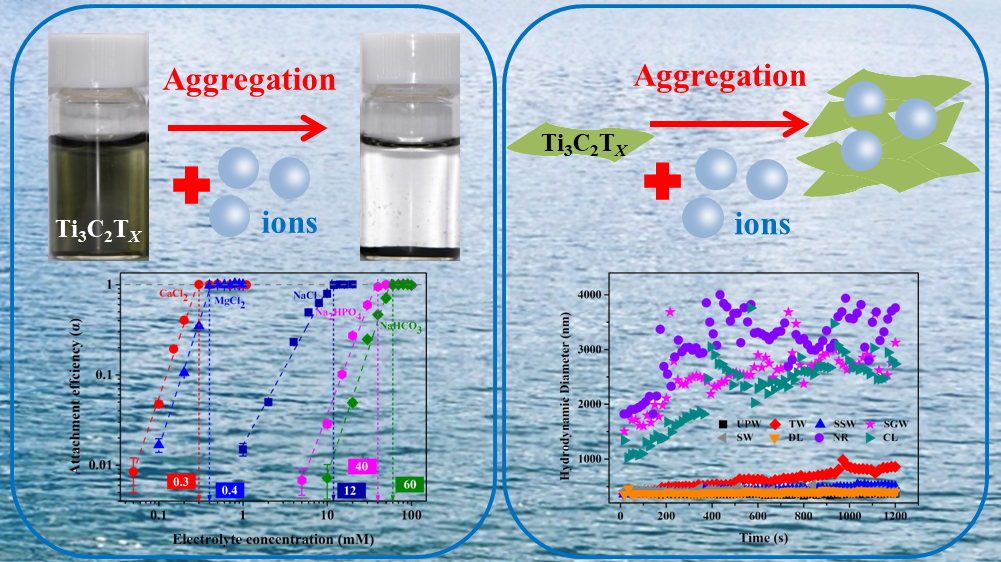
Chinese scientists studied the colloidal behavior of 2D MXene materials in the water environment and found that Ti3C2Tx MXene was easy to be destabilized and unlikely to be transported over long distances in the synthetic or natural waters.
This work was conducted by CHEN Changlun and his colleagues with Institute of Plasma Physics, Hefei Institutes of Physical Science. And the results of this study will be helpful to assess the application safety of MXene materials and provide useful reference and guidance for predicting the environmental trend and ecological risks of MXene materials with radionuclides.
Due to its unique 2D layered structure, good conductivity and hydrophilicity, magnetic and light transmission, mechanical properties, MXene materials have been widely used in energy storage, catalysis, electromagnetic shielding interference and other fields, showing a very good application prospect.
Moreover, MXene also has the advantages of large specific surface area, rich active sites and controllable layer spacing, which has been extensively studied for the removal of environmental pollutants such as heavy metal ions and radionuclides.
In conjunction with rapid growth in the production and application of MXene, the release of MXene into the natural or engineered aqueous environment is inevitable.
To study on the fate and effects of MXene in the environment, the team selected Ti3C2Tx as the representative MXene material and systematically studied the aggregation dynamics and long-term stability of Ti3C2Tx MXene in different synthetic water and natural water bodies by using static batch experiment and combining with microscopic spectral characterization.
"This is a preliminary research on the aggregation behavior of Ti3C2Tx in environment," said CHEN Changlun, "to further explore the safety of 2D MXene materials application, our research group will continue the study and analysis on the related mechanism between adsorption, colloidal properties and toxicological properties of radionuclides and MXene systems, as well as the compound toxicity mechanism of MXene materials and radionuclides to bacteria."

Aggregation of MXene material in water environment (Image by XIE Yi)

86-10-68597521 (day)
86-10-68597289 (night)

52 Sanlihe Rd., Xicheng District,
Beijing, China (100864)

